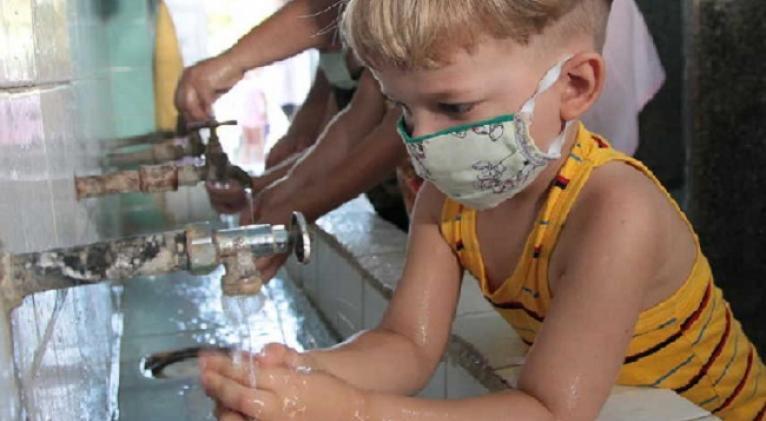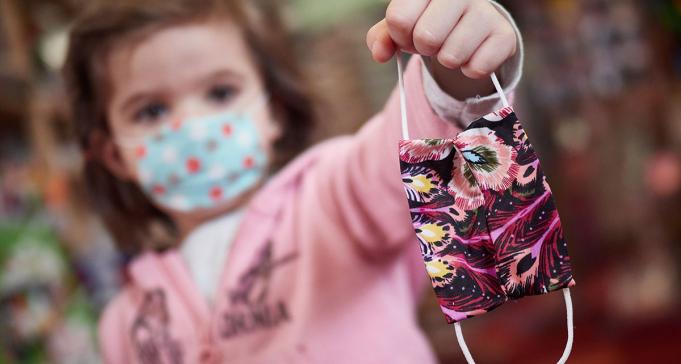Clinical trials with Soberana vaccine on pediatric population kicked off
especiales

Children are the most important age group in Cuba and that is a fact. And there is another reason to believe so. To prove me right, with a greater responsibility, professionalism, and commitment, the first dose of the vaccine candidate Soberana 02 was administered to 25 volunteers from 12-18 years-old.
Thus, the first clinical trial carried out on children started today. Its name is Soberana-Pediatría and it will be a phase I/II study, sequentially over phase I, open (without placebo), adaptive, and multicenter.
Phase I will only take place at the Juan Manuel Márquez Pediatric Hospital, whereas phase II will be developed in other clinical sites in Havana, according to Dr. Meiby de la Caridad Rodríguez González, director of Clinical Researches at the Finlay Vaccine Institute (IFV).
Authorized in recent days by CECMED (Cuban Center for the Control of Drugs and Medical Equipment), this clinical trial on pediatric population aims at assessing the safety, reactogenicity and immunogenicity of the preventive vaccine candidates anti-SARS-COV-2, in a heterologous scheme of two doses of Soberana 02 and a third with Soberana Plus in Cuban children and adolescents, by the intramuscular route and at intervals of 28 days between each dose.
The IFV specialist explained that 50 volunteers, children and adolescents, participate in phase I, which is divided into two sequences. The first is held with 25 adolescents between 12 and 18 years of age. Once the safety in this group has been demonstrated, a report will be issued to CECMED, in which the passage to sequence two must be authorized, which will be carried out with children from three to 11 years-old, Granma newspaper reported.
With this phase I, she said, the aim is to evaluate the safety and reactogenicity of the antigen in this age group. Meanwhile, phase II will be expanded to a universe of 300 subjects, and its purpose will be to analyze the immunogenicity of the vaccine candidate.
Last Friday, the first adolescent volunteers were recruited at the Juan Manuel Márquez Hospital, who met the selection criteria.
In total, they are 350 Cuban children and adolescents of either sex, with ages ranging from 3 to 18 years-old. In the case of children with the previously given consent of their parent or legal tutors for participation and in the case of adolescents and young individuals with their consent for participation.
Dr. Rodríguez González detailed that the trial commenced with 25 adolescents between 12 and 18 years-old at the Juan Manuel Márquez Hospital —where the selection of volunteers took place.
With regard to phase II, she said that it will be expanded to a universe of 300 subjects.
After vaccination, “the subjects remain under surveillance for one hour after being inoculated as protocols dictate. Afterwards, subjects have to check in every 24 hours for three days in a row as adverse effects related to the vaccine may occur in that span. Then, they come after a week and a medical check-up is made to them as well as the conclusion on the effects developed. A blood draw is also done. The safety report —which is validated by CECMED—is issued to the promoter. This is a comprehensive report of events occurred in the span of a week. If no red flags are found, that group of 3-11 years-old starts phase II along with the already-evaluated group of 12-18 years-old,” she stated.
With regard to blood determination, the specialist said that “as we are evaluating safety and we are going to move from one sequence to another providing elements in this regard, the safety we are pointing out is not only evaluated from the clinical approach, but we also aim to know if the vaccine candidate cause changes in the blood sampling parameters. That is why, for instance, a blood draw is done after seven days of inoculating the first dose. If everything is fine, and there are no significant changes from the chemical viewpoint, a safety report would be then issued, which would lead to the green light in children aged 3-12 and phase II with subjects aged 12-18.”
In total, children and adolescents participating in the trial will remain fourth months in the study if we take into consideration the recruiting process and the vaccination at intervals of 28 days between each dose.
As to the age range chosen, Cuba made that selection, as other nations did, because the vaccine candidate administered to children in that age does not compete with other vaccines.

Dr. Rinaldo Puga Gómez —pediatrician and immunologist at Cira García Central Clinic and chief investigator of the clinical trial Soberana-Pediatría Phase I/II — added that the most inoculated vaccine in the population is the Cuban pentavalent vaccine, administered to individuals of 18 months-old. Hence we started this pediatric trial on 3 years old children.
As to the vaccine against typhus, its inoculation has been paused because of the break in Education. Therefore, it cannot compete with our vaccine candidates. So “there is no concomitance with other biologic products.”
Dr. Rodríguez González recalled that the aforementioned mix of vaccine candidates has proven to be effective so far in Cuba’s adult population, including the intervention study carried out on risk population without the emergence of severe adverse effects.
The use of proven platforms and technologies certifies these vaccine candidates, paired with 15+ years of experience in the development of vaccine candidates at the IFV, is also applied in the production of the active ingredient of the conjugated vaccine Quimi-Hib®, which has proven safe in breastfeeding population and has been part of the National Immunization Program since 2004.
Why do children need to be immunized?
The first wave of COVID-19 in Cuba only affected 200 children. However, that figure painfully skyrocketed in the second wave and more than 40,000 children have gotten infected since March 21st.
Early this month, children and adolescent diagnosed with the condition accounted for 12,1% of all Cubans infected. According to the MISAP report, as of yesterday, of the total number of 1470 infected individuals —the highest number in one day— 232 positive cases were children and 15 under age 1.
When the pandemic sprouted in Cuba, people did not know much about coronavirus. That is why we believed it mostly affected senior citizens.
But the knowledge on the virus impact on pediatric population has shed more lights and “although the asymptomatic form is more common in children, some cases with high viral loads have been spotted in infants with the virus replication in their gastrointestinal tract, therefore facilitating the spreading,” pointed out the director of Clinical Researches at the Finlay Vaccine Institute.
The constant and committed work of scientists have made it possible to know that in children who suffered the disease, even in its moderate and mild form, physical after-effects linger; not to mention those of psychological nature.
Dr. Rodríguez González also stated that there is another concern now. The shifting in the infection rate from adults to children. The more adult population is immunized, the greater risk is found in pediatric population as they become more vulnerable and therefore, positive cases may multiply.
Considering all these elements, international agencies advise countries to include pediatric population in their respective vaccination strategy. “To achieve it, children must be first evaluated in clinical trials.”
Translated by Sergio A. Paneque Díaz / CubaSí Translation Staff














Add new comment